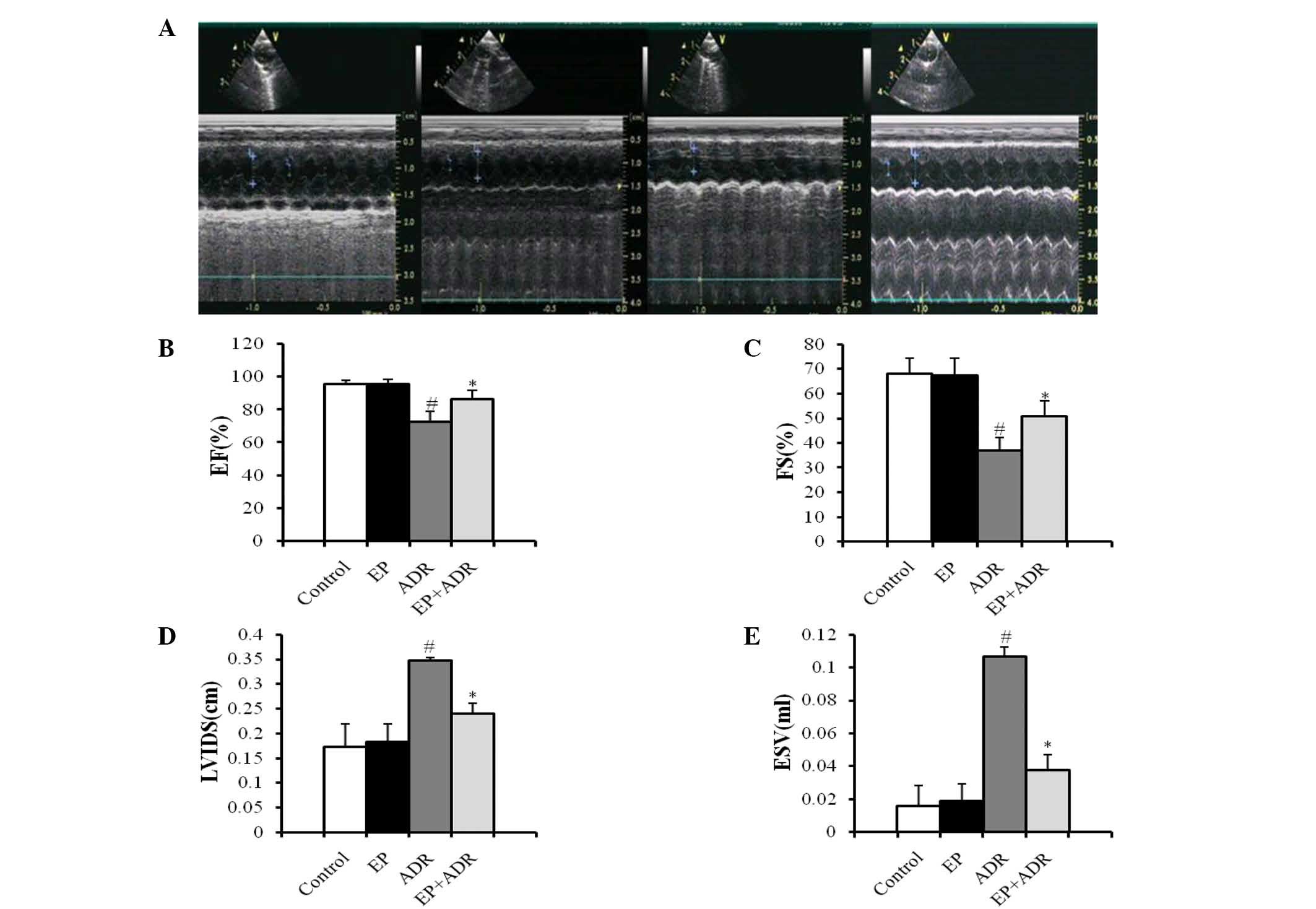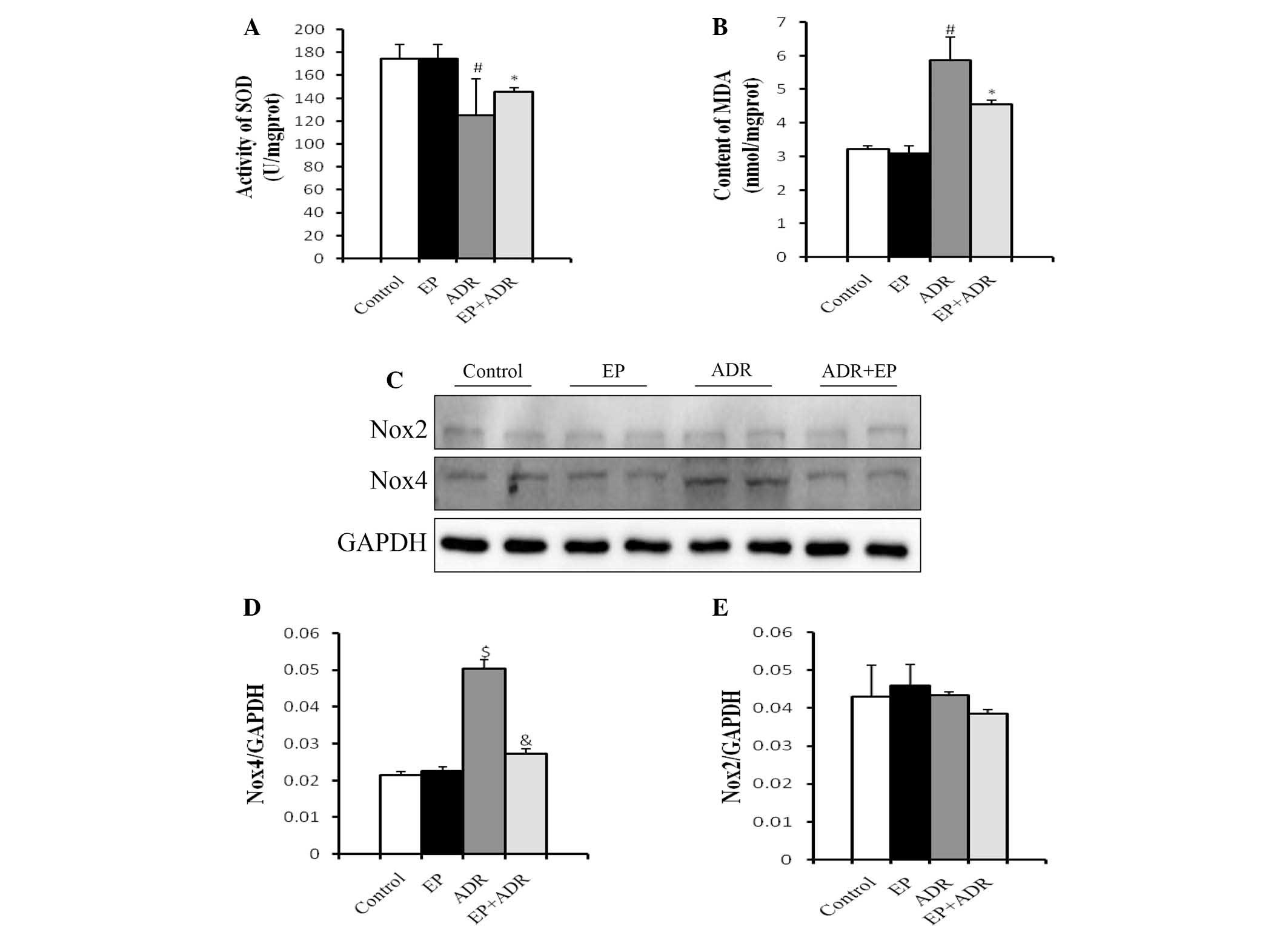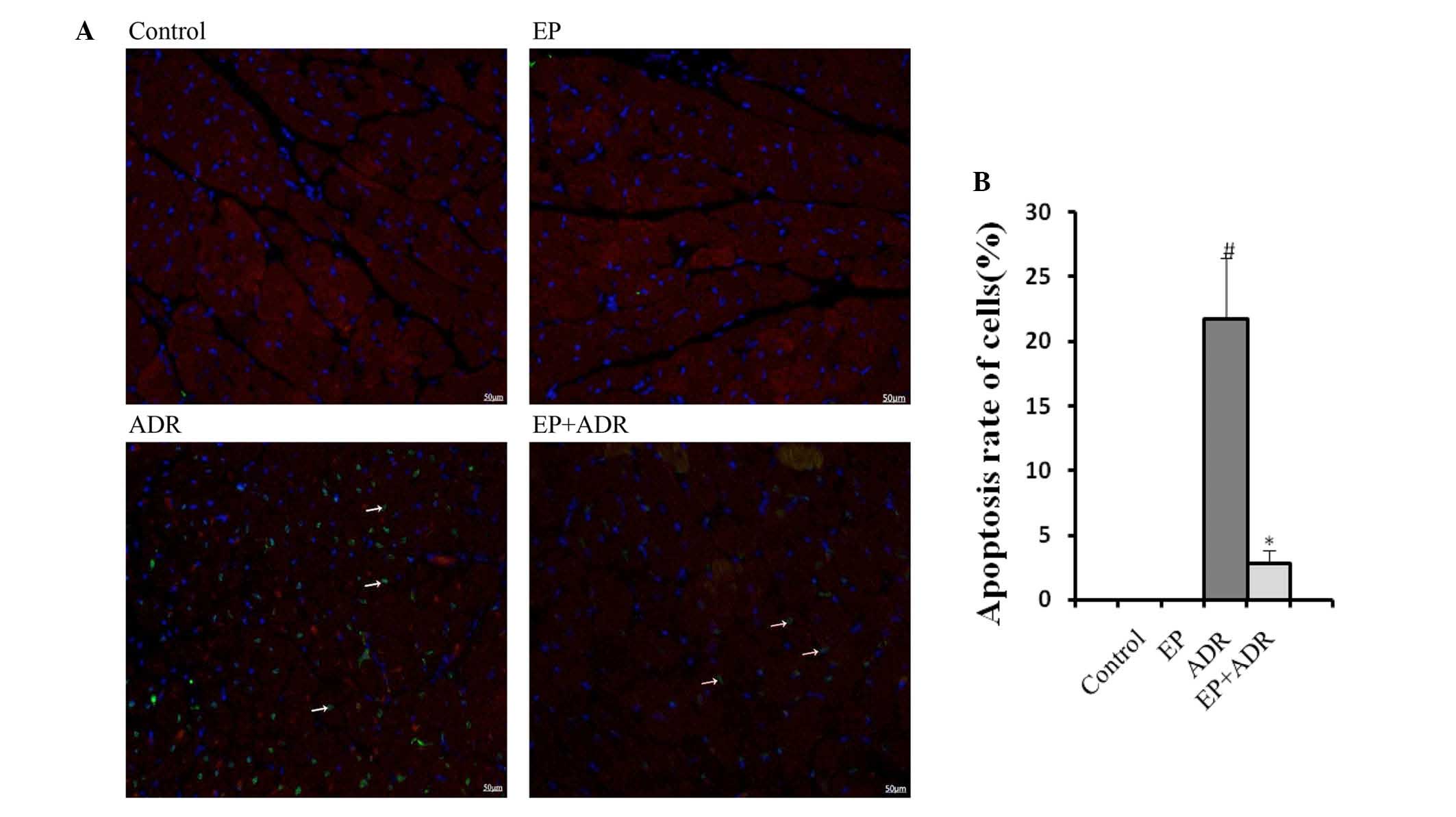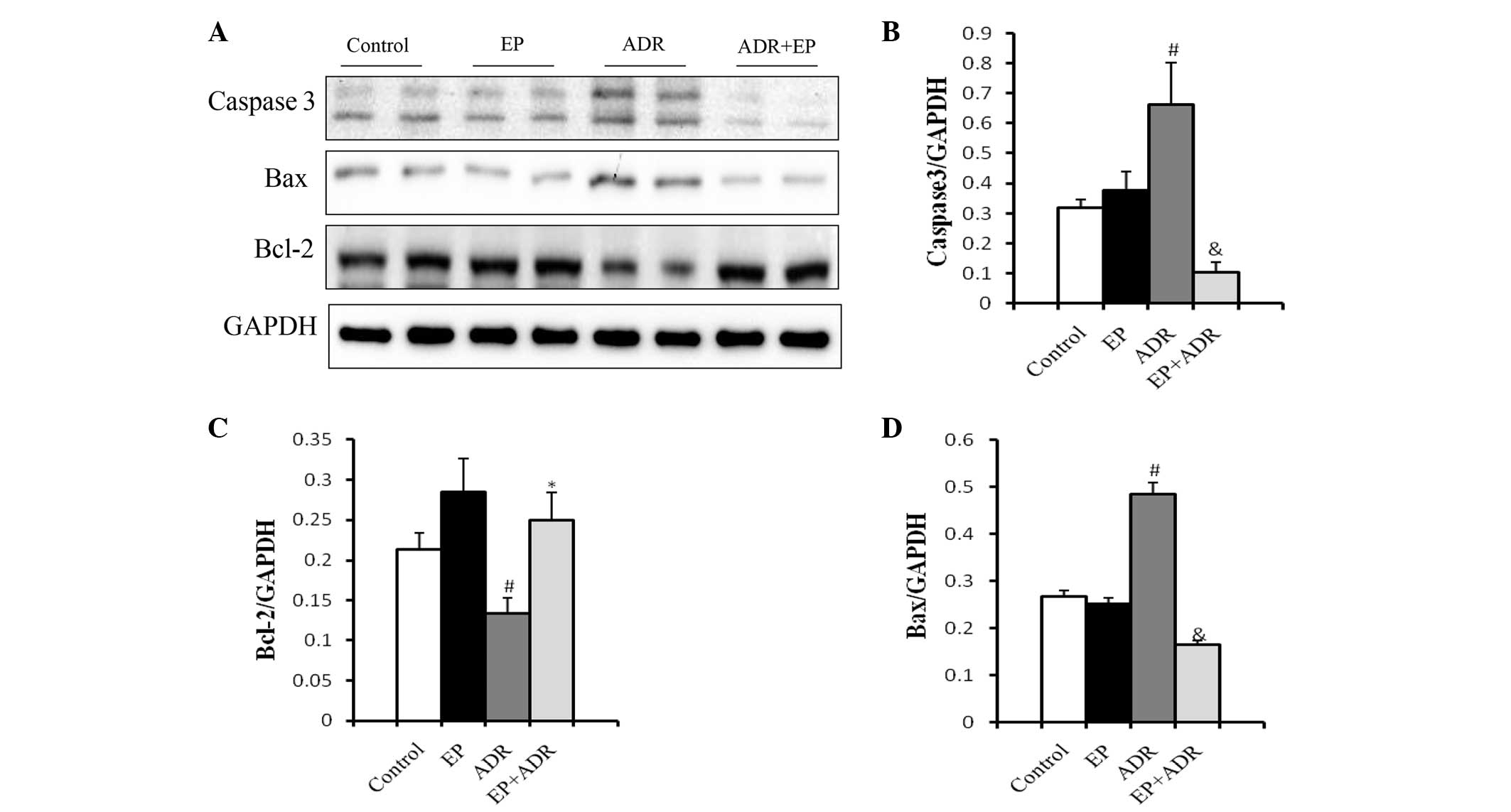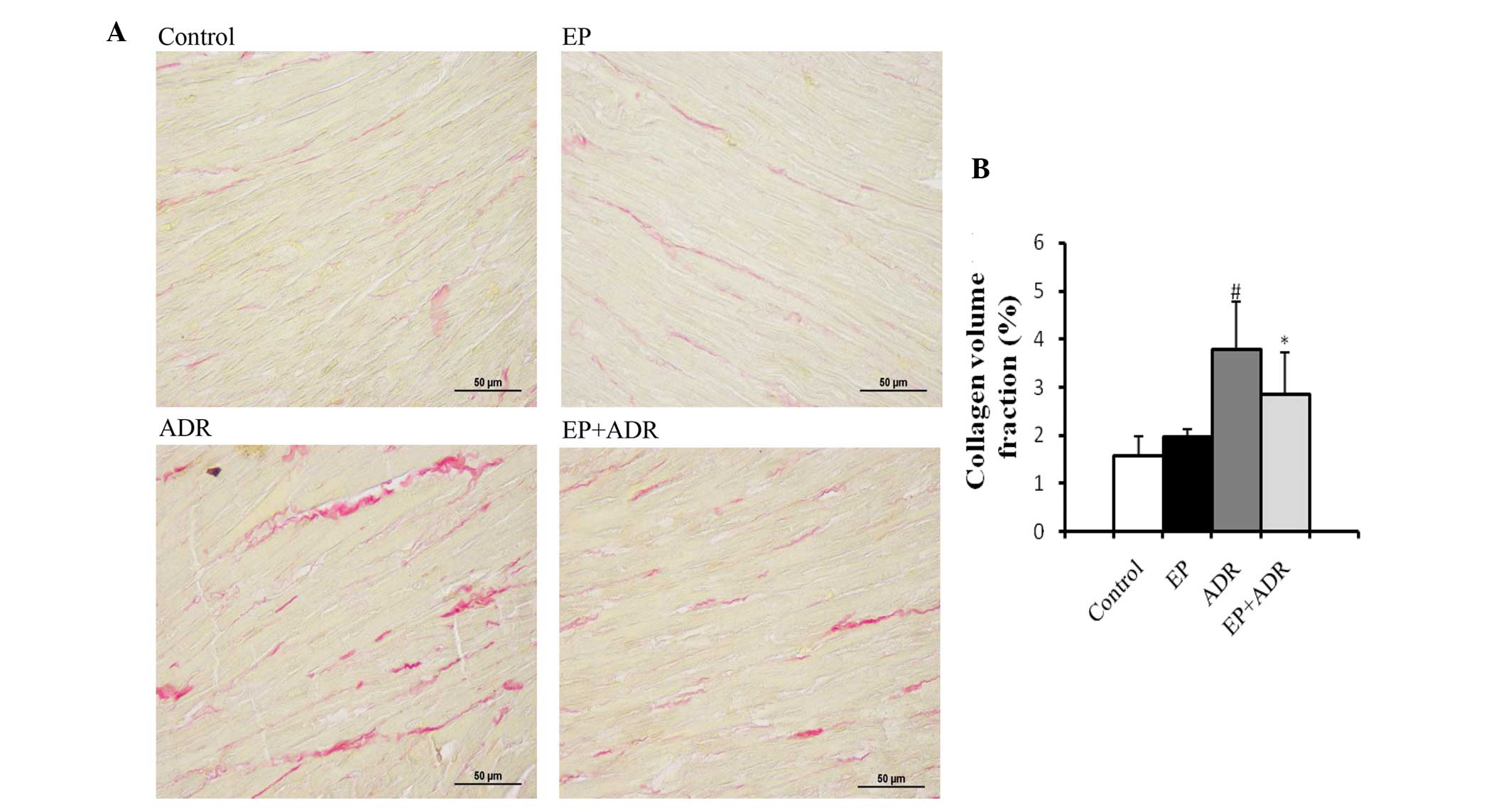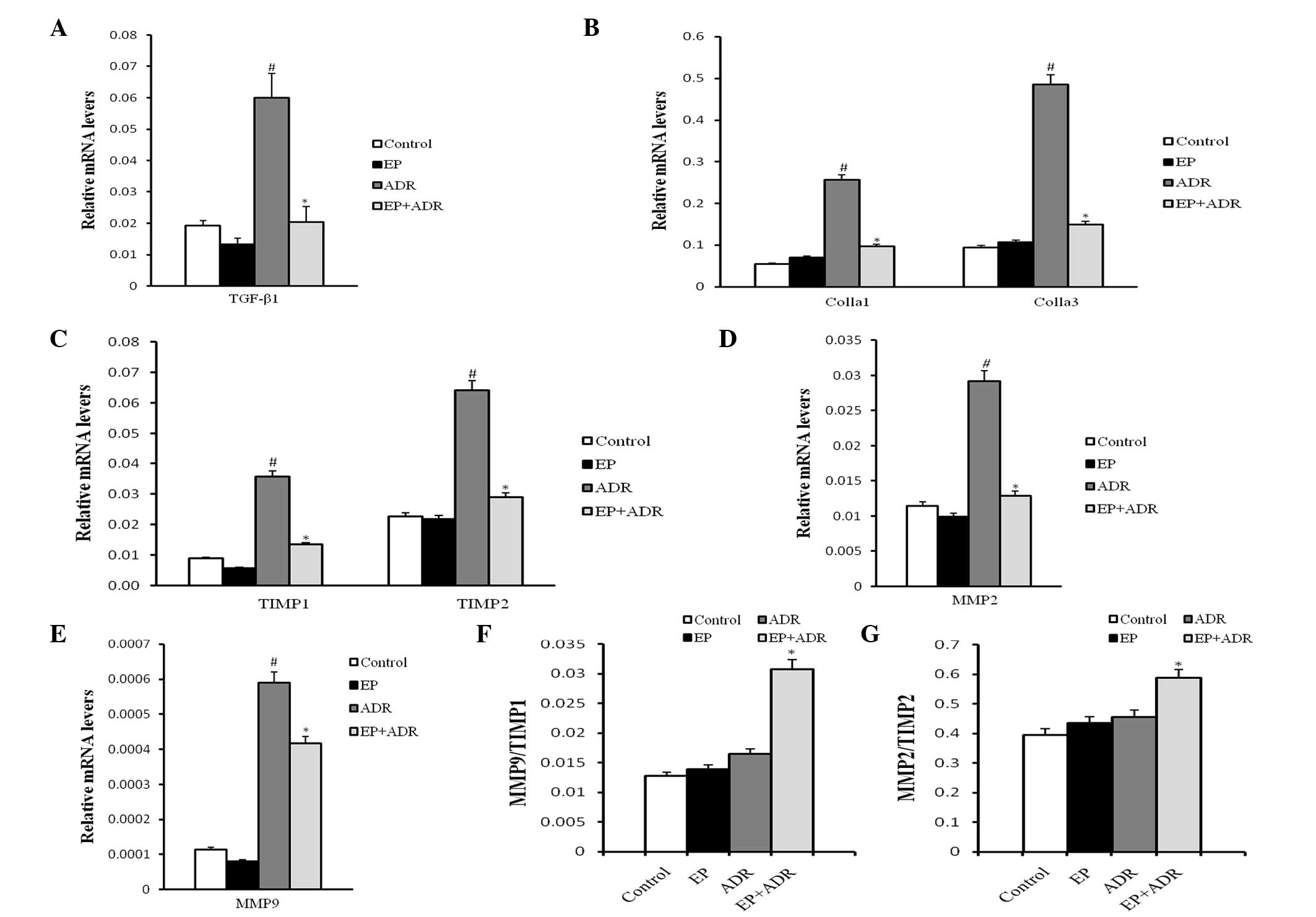|
1
|
Felker GM, Thompson RE, Hare JM, Hruban
RH, Clemetson DE, Howard DL, Baughman KL and Kasper EK: Underlying
causes and long-term survival in patients with initially
unexplained cardiomyopathy. N Engl J Med. 342:1077–1084. 2000.
View Article : Google Scholar : PubMed/NCBI
|
|
2
|
Zhang S, Liu X, Bawa-Khalfe T, Lu LS, Lyu
YL, Liu LF and Yeh ET: Identification of the molecular basis of
doxorubicin-induced cardiotoxicity. Nat Med. 18:1639–1642. 2012.
View Article : Google Scholar : PubMed/NCBI
|
|
3
|
Jones LW, Haykowsky MJ, Swartz JJ, Douglas
PS and Mackey JR: Early breast cancer therapy and cardiovascular
injury. J Am Coll Cardiol. 50:1435–1441. 2007. View Article : Google Scholar : PubMed/NCBI
|
|
4
|
Arya DS, Bansal P, Ojha SK, Nandave M,
Mohanty I and Gupta SK: Pyruvate provides cardioprotection in the
experimental model of myocardial ischemic reperfusion injury. Life
Sci. 79:38–44. 2006. View Article : Google Scholar : PubMed/NCBI
|
|
5
|
Sims CA, Wattanasirichaigoon S, Menconi
MJ, Ajami AM and Fink MP: Ringer's ethyl pyruvate solution
ameliorates ischemia/reperfusion-induced intestinal mucosal injury
in rats. Crit Care Med. 29:1513–1518. 2001. View Article : Google Scholar : PubMed/NCBI
|
|
6
|
Sileri P, Schena S, Morini S, Rastellini
C, Pham S, Benedetti E and Cicalese L: Pyruvate inhibits hepatic
ischemia-reperfusion injury in rats. Transplantation. 72:27–30.
2001. View Article : Google Scholar : PubMed/NCBI
|
|
7
|
Yi JS, Kim TY, Kyu Kim D and Koh JY:
Systemic pyruvate administration markedly reduces infarcts and
motor deficits in rat models of transient and permanent focal
cerebral ischemia. Neurobiol Dis. 26:94–104. 2007. View Article : Google Scholar : PubMed/NCBI
|
|
8
|
Marcengill MB, Puri S, Puri SK, Mohanram
A, Leonova E, Raymond RM and Watts JA: Antioxidant effects of
pyruvate in isolated rat hearts. J Mol Cell Cardiol. 27:2059–2067.
1995. View Article : Google Scholar : PubMed/NCBI
|
|
9
|
Kao KK and Fink MP: The biochemical basis
for the anti-inflammatory and cytoprotective actions of ethyl
pyruvate and related compounds. Biochem Pharmacol. 80:151–159.
2010. View Article : Google Scholar : PubMed/NCBI
|
|
10
|
Guo JL, Zhang J, Luo XY, Luo WM, Lin CY,
Zhang KL and Ji YM: Effects of ethyl pyruvate on cardiac function
recovery and apoptosis reduction after global cold ischemia and
reperfusion. Exp Ther Med. 7:1197–1202. 2014.PubMed/NCBI
|
|
11
|
Kao KK and Fink MP: The biochemical basis
for the anti-inflammatory and cytoprotective actions of ethyl
pyruvate and related compounds. Biochem Pharmacol. 80:151–159.
2010. View Article : Google Scholar : PubMed/NCBI
|
|
12
|
Clark JD, Gebhart GF, Gonder JC, Keeling
ME and Kohn DF: The 1996 Guide for the Care and Use of Laboratory
Animals. ILAR J. 38:41–48. 1997. View Article : Google Scholar : PubMed/NCBI
|
|
13
|
Jiang DS, Li L, Huang L, Gong J, Xia H,
Liu X, Wan N, Wei X, Zhu X, Chen Y, et al: Interferon regulatory
factor 1 is required for cardiac remodeling in response to pressure
overload. Hypertension. 64:77–86. 2014. View Article : Google Scholar : PubMed/NCBI
|
|
14
|
Desagher S, Glowinski J and Premont J:
Astrocytes protect neurons from hydrogen peroxide toxicity. J
Neurosci. 16:2553–2562. 1996.PubMed/NCBI
|
|
15
|
Shadab M, Agrawal DK, Aslam M, Islam N and
Ahmad Z: Occupational health hazards among sewage workers:
Oxidative stress and deranged lung functions. J Clin Diagn Res.
8:BC11–BC12. 2014.PubMed/NCBI
|
|
16
|
Leontyev S, Schlegel F, Spath C, Schmiedel
R, Nichtitz M, Boldt A, Rübsamen R, Salameh A, Kostelka M, Mohr FW
and Dhein S: Transplantation of engineered heart tissue as a
biological cardiac assist device for treatment of dilated
cardiomyopathy. Eur J Heart Fail. 15:23–35. 2013. View Article : Google Scholar : PubMed/NCBI
|
|
17
|
Li K, Sung RY, Huang WZ, Yang M, Pong NH,
Lee SM, Chan WY, Zhao H, To MY, Fok TF, et al: Thrombopoietin
protects against in vitro and in vivo cardiotoxicity induced by
doxorubicin. Circulation. 113:2211–2220. 2006. View Article : Google Scholar : PubMed/NCBI
|
|
18
|
Lau DH, Psaltis PJ, Carbone A, Kelly DJ,
Mackenzie L, Worthington M, Metcalf RG, Kuklik P, Nelson AJ, Zhang
Y, et al: Atrial protective effects of n-3 polyunsaturated fatty
acids: A long-term study in ovine chronic heart failure. Heart
Rhythm. 8:575–582. 2011. View Article : Google Scholar : PubMed/NCBI
|
|
19
|
Andreadou I, Mikros E, Ioannidis K, Sigala
F, Naka K, Kostidis S, Farmakis D, Tenta R, Kavantzas N, Bibli SI,
et al: Oleuropein prevents doxorubicin-induced cardiomyopathy
interfering with signaling molecules and cardiomyocyte metabolism.
J Mol Cell Cardiol. 69:4–16. 2014. View Article : Google Scholar : PubMed/NCBI
|
|
20
|
Ohkura K, Lee JD, Shimizu H, Nakano A,
Uzui H, Horikoshi M, Fujibayashi Y, Yonekura Y and Ueda T:
Mitochondrials complex I activity is reduced in latent
adriamycin-induced cardiomyopathy of rat. Mol Cell Biochem.
248:203–208. 2003. View Article : Google Scholar : PubMed/NCBI
|
|
21
|
Brandes RP, Weissmann N and Schröder K:
Nox family NADPH oxidases: Molecular mechanisms of activation. Free
Radic Biol Med. 76:208–226. 2014. View Article : Google Scholar : PubMed/NCBI
|
|
22
|
West AP, Brodsky IE, Rahner C, Woo DK,
Erdjument-Bromage H, Tempst P, Walsh MC, Choi Y, Shadel GS and
Ghosh S: TLR signalling augments macrophage bactericidal activity
through mitochondrial ROS. Nature. 472:476–480. 2011. View Article : Google Scholar : PubMed/NCBI
|
|
23
|
Maejima Y, Kuroda J, Matsushima S, Ago T
and Sadoshima J: Regulation of myocardial growth and death by NADPH
oxidase. J Mol Cell Cardiol. 50:408–416. 2011. View Article : Google Scholar : PubMed/NCBI
|
|
24
|
Zhao Y, McLaughlin D, Robinson E, Harvey
AP, Hookham MB, Shah AM, McDermott BJ and Grieve DJ: Nox2 NADPH
oxidase promotes pathologic cardiac remodeling associated with
doxorubicin chemotherapy. Cancer Res. 70:9287–9297. 2010.
View Article : Google Scholar : PubMed/NCBI
|
|
25
|
Ortiz C, Caja L, Sancho P, Bertran E and
Fabregat I: Inhibition of the EGF receptor blocks autocrine growth
and increases the cytotoxic effects of doxorubicin in rat hepatoma
cells: Role of reactive oxygen species production and glutathione
depletion. Biochem Pharmacol. 75:1935–1945. 2008. View Article : Google Scholar : PubMed/NCBI
|
|
26
|
Gao S, Li H, Feng XJ, Li M, Liu ZP, Cai Y,
Lu J, Huang XY, Wang JJ, Li Q, et al: α-Enolase plays a
catalytically independent role in doxorubicin-induced cardiomyocyte
apoptosis and mitochondrial dysfunction. J Mol Cell Cardiol.
79:92–103. 2015. View Article : Google Scholar : PubMed/NCBI
|
|
27
|
Janeesh PA and Abraham A: Robinin
modulates doxorubicin-induced cardiac apoptosis by TGF-β1 signaling
pathway in Sprague Dawley rats. Biomed Pharmacother. 68:989–998.
2014. View Article : Google Scholar : PubMed/NCBI
|
|
28
|
Wight TN and Potter-Perigo S: The
extracellular matrix: An active or passive player in fibrosis? Am J
Physiol Gastrointest Liver Physiol. 301:G950–G955. 2011. View Article : Google Scholar : PubMed/NCBI
|
|
29
|
Sethi A, Jain A, Zode GS, Wordinger RJ and
Clark AF: Role of TGFbeta/Smad signaling in gremlin induction of
human trabecular meshwork extracellular matrix proteins. Invest
Ophthalmol Vis Sci. 52:5251–5259. 2011. View Article : Google Scholar : PubMed/NCBI
|
|
30
|
Xu J, Wang P, Wang T, Wang M, Chen S, Yu P
and Yu D: Effects of reduced β2-glycoprotein I on the expression of
aortic matrix metalloproteinases and tissue inhibitor matrix
metalloproteinases in diabetic mice. BMC Cardiovasc Disord.
14:1142014. View Article : Google Scholar : PubMed/NCBI
|
|
31
|
Arafa MH, Mohammad NS, Atteia HH and
Abd-Elaziz HR: Protective effect of resveratrol against
doxorubicin-induced cardiac toxicity and fibrosis in male
experimental rats. J Physiol Biochem. 70:701–711. 2014. View Article : Google Scholar : PubMed/NCBI
|















